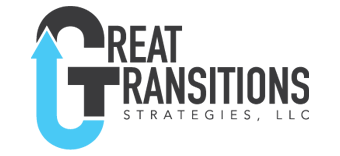What single action will move your business forward?
Writing a business plan.
In the research phase you were researching yourself. How difficult was it for you to determine your drivers, set a vision of what you are looking for, and nail down the business you are after. I get a wide spectrum; some folks struggle others nail it down quickly. Time to take action to put your business in place.
Action
There is still a lot of research in this phase however, it is very active, faces external to you, and it centers on developing your business plan.
What comes to mind when I say business plan? I am hoping commitment. When you put things in writing you are making a commitment, even if it is only to yourself.
The plan is your educated prediction of the future. It communicates your plan and is a tool to measure progress. Are you ahead, behind, or on track? What is causing the deviation and how do you need to adjust.
Your business plan also communicates to partners, lenders and investors your justification for their support. It articulates why you are in business, what you are doing, who you are doing it with, and how you plan on executing it. If you require funding or the partnership of anyone, they are going to ask for you to share your plan. That’s the reasoning now let’s put it together.
Parts of the Plan
How big and detailed does this need to be? It depends. You can google one page business plan and find templates for single page plans. You can also google templates for business plans for the type of business you are creating. Generally, for a small business you will find plans are between 10-15 pages of written material with an appendix showing your financial projections. Everything you write has the purpose of supporting your financial projections.
If you want a good place to start, go to SBA.gov and find one of their templates. You are going to start with “Why” and follow with “What”, “Who” and “How”.
You did all the work up front on why, so that part is easy. Next, what problems are you solving and for who. This is where the external and very active research takes place. At this point you are creating a marketing plan which is embedded in the business plan.
Who are you solving the problem for? Who is your ideal client? Having a coach as a partner in this phase is extremely valuable. Challenging assumptions, pushing for validated data, and providing alternative perspectives helps you move from a framework of a business to a solid structure. This leads to the most important part, your financial numbers.
What numbers do you need?
You need the startup costs and revenue projections for years 1-3. “How am I ever going to do that?” You ask.
Through active research, websites, meetings, networking, getting estimates. “Where should I start” is your next question.
Here is a “back of the envelope” exercise I do with my clients. It is simple yet very enlightening. First, I ask them how much money they want to take home after taxes from their business? Second, what do you think you need to gross to make that happen?
I often get a quizzical look. Next questions: What do you think your expenses will be each year? Followed by, what is the self-employment tax you will pay?
In 10 minutes, they have a rough set of numbers and are usually surprised. The question then becomes. “How much of your product or service do you need to sell at what price to generate that income?
That generates action to research markets, revenue, expenses, and building their financial model. All reflected on spreadsheets. As the spreadsheets become more detailed and accurate so does the written portion of the business plan.
This begins to reflect reality. Which generates some soul searching; will you be able to execute your original vision? Options are considered such as; a pivot, raising money, scaling down, or growing more slowly. Other considerations are for the entrepreneurs to keep their day job rather than leaping completely into the business.
How valuable would it be to have an objective sounding board to help you work through these challenges? A coach’s only agenda is assist you in coming to the right decision. One that is aligned with your values.




